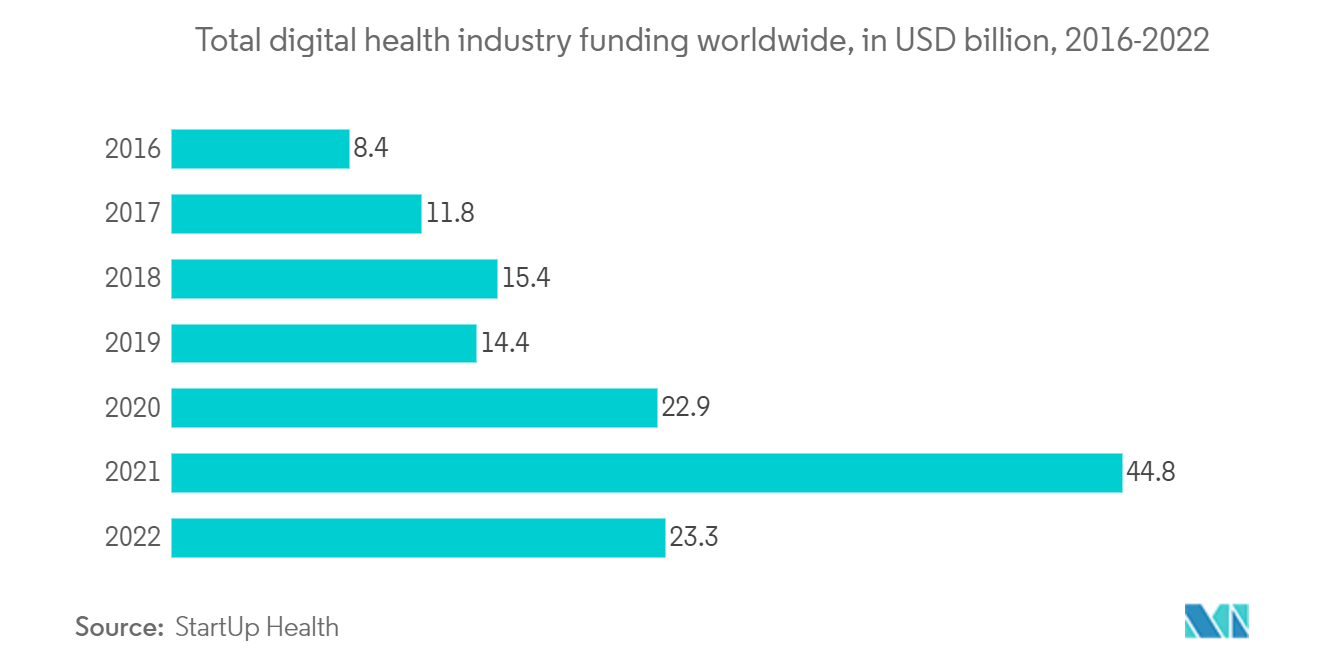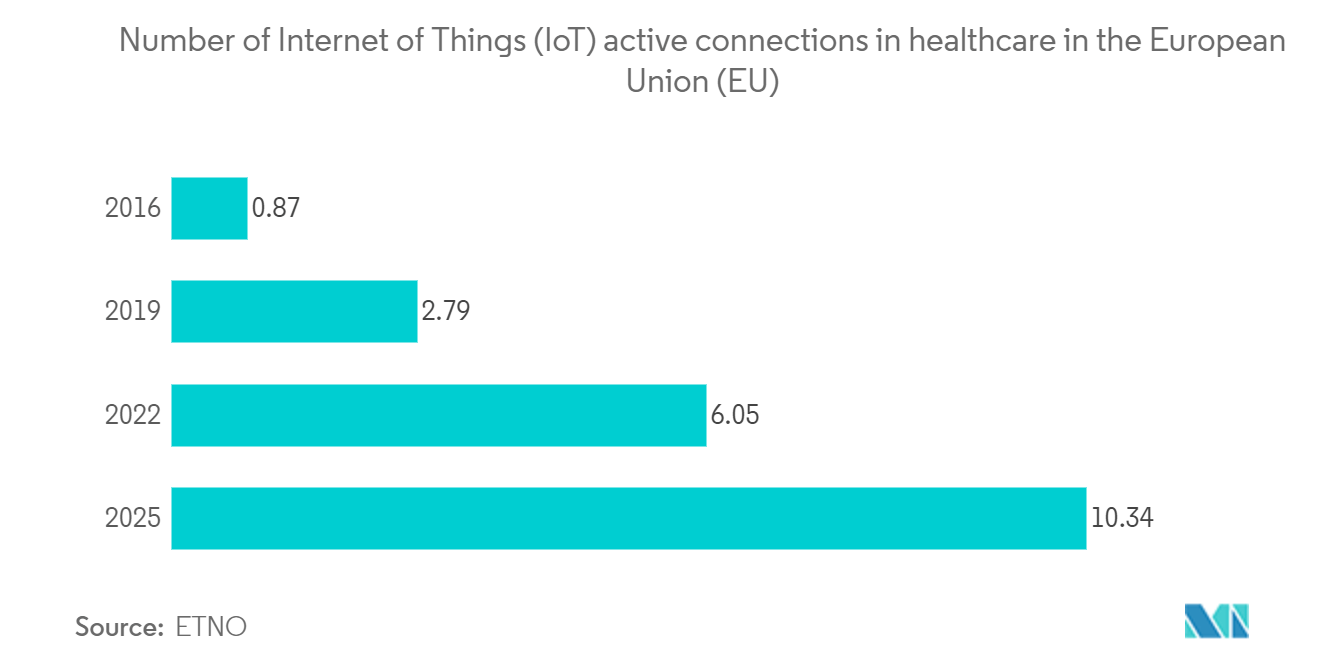Market Trends of Europe Wireless Healthcare Industry
Home Care is Expected to Gain Significant Share
- During the COVID-19 pandemic, the hospital-at-home model has grown in popularity, allowing healthcare organizations to offer acute-level care in patient homes. Several market players are involved in various strategic developments to capture the majority of the market share.
- For instance, in August 2022, Medtronic plc, a global provider of healthcare technology, entered into a strategic partnership with BioIntelliSense, a continuous health monitoring and clinical intelligence company, for the exclusive US hospital and 30-day post-acute hospital-to-home distribution rights of the BioButton multi-parameter wearable for continuous, connected monitoring. This allows the Medtronic Patient Monitoring business to provide access to a medical-grade device that provides continuous vital sign measurements of general care patients in-hospital as well as post-discharge.
- The region is an early adopter of advanced technologies and is one of the most developed healthcare industries, thus augmenting the growth of wireless healthcare services. Moreover, a significant proportion of the European population is aged 65 years and above, and as per the UN, the figure is anticipated to grow significantly to 24% by 2030. The integration of wireless technology in healthcare also allows the facilitation of enhanced patient treatment systems in the region.
- Moreover, remote patient monitoring is a continually rising trend in health care in the country, which will enable caregivers to receive vital health information about patients. The updates from a patient at home enable healthcare experts to make better decisions in a virtual setting, which will help patients experience the best possible health.
- Overall, in today’s era of digitalization, smart health care has become one of the major advancements in the health field. IoT is utilized in homes to monitor patients remotely. IoT allows for real-time monitoring, which saves lives from a variety of ailments such as diabetes, heart failure, asthma attacks, and high blood pressure. Smart medical gadgets link to a smartphone to seamlessly send needed health information to clinicians. These devices also capture information such as oxygen levels, blood pressure, weight, and blood sugar levels.

Increasing Adoption of Internet of Things (IoT) and Wearable Devices in Healthcare to Drive the Wireless Healthcare Market
- The evolution of healthcare IT has been augmented by the intervention of the Internet of Things (IoT) and wearable devices in the industry, which called for a connected hospital environment. Wireless network solutions are helping the healthcare industry by allowing practitioners to access files remotely to direct diagnosis in case of unavailability.
- Moreover, with the substantial enhancements in the healthcare infrastructure, Internet of Things (IoT)-enabled remote monitoring and communication technologies are gaining significant traction over the past few years. This, in turn, has fostered the widespread adoption of wireless healthcare solutions in hospitals and nursing homes to provide quality treatment and care by accumulating medical information via body-worn sensors.
- Further, IoT's impact is changing how doctors and hospital organizations care for their patients and helping simplify healthcare, lower costs, and improve access to critical medical information. Moreover, as the heart disease rate is increasing rapidly, the IoT system utilizes algorithms for continuous ECG monitoring in patients at the hospital.
- In electrocardiogram (ECG) monitoring, the system keeps track of the heart rate and basic rhythm by recording the heart's electrical activities. The ECG monitor consists of a wireless transmitter and a receiver. An automated application can identify abnormal heart activity, and the data is transferred in real-time to mobile phones and the doctor's clinic via the network.
- Healthcare organizations and professionals rely on many types of data gathering or health alert systems to monitor a patient’s health and vital signs, owing to the proliferation of IoT and wearable devices. For instance, according to the data from ETNO, the number of Internet of Things (IoT) active connections in healthcare in the European Union (EU) is expected to reach 10.34 million connections by 2025. This further boosts the demand for efficient wireless connectivity, thus, in turn, boosting the market growth.

